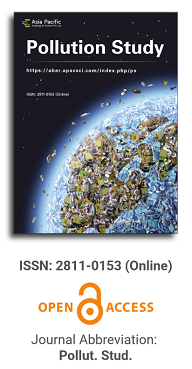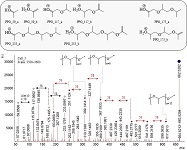
Asia Pacific Academy of Science Pte. Ltd. (APACSCI) specializes in international journal publishing. APACSCI adopts the open access publishing model and provides an important communication bridge for academic groups whose interest fields include engineering, technology, medicine, computer, mathematics, agriculture and forestry, and environment.

The (partial) replacement of synthetic polymers with bioplastics is due to increased production of conventional packaging plastics causing for severe environmental pollution with plastics waste. The bioplastics, however, represent complex mixtures of known and unknown (bio)polymers, fillers, plasticizers, stabilizers, flame retardant, pigments, antioxidants, hydrophobic polymers such as poly(lactic acid), polyethylene, polyesters, glycol, or poly(butylene succinate), and little is known of their chemical safety for both the environment and the human health. Polymerization reactions of bioplastics can produce no intentionally added chemicals to the bulk material, which could be toxic, as well. When polymers are used to food packing, then the latter chemicals could also migrate from the polymer to food. This fact compromises the safety for consumers, as well. The scarce data on chemical safety of bioplastics makes a gap in knowledge of their toxicity to humans and environment. Thus, development of exact analytical protocols for determining chemicals of bioplastics in environmental and food samples as well as packing polymers can only provide warrant for reliable conclusive evidence of their safety for both the human health and the environment. The task is compulsory according to legislation Directives valid to environmental protection, food control, and assessment of the risk to human health. The quantitative and structural determination of analytes is primary research task of analysis of polymers. The methods of mass spectrometry are fruitfully used for these purposes. Methodological development of exact analytical mass spectrometric tools for reliable structural analysis of bioplastics only guarantees their safety, efficacy, and quality to both humans and environment. This study, first, highlights innovative stochastic dynamics equations processing exactly mass spectrometric measurands and, thus, producing exact analyte quantification and 3D molecular and electronic structural analyses. There are determined synthetic polymers such as poly(ethylenglycol), poly(propylene glycol), and polyisoprene as well as biopolymers in bags for foodstuffs made from renewable cellulose and starch, and containing, in total within the 20,416–17,495 chemicals per sample of the composite biopolymers. Advantages of complementary employment in mass spectrometric methods and Fourier transform infrared spectroscopy is highlighted. The study utilizes ultra-high resolution electrospray ionization mass spectrometric and Fourier transform infrared spectroscopic data on biodegradable plastics bags for foodstuffs; high accuracy quantum chemical static methods, molecular dynamics; and chemometrics. There is achieved method performance |r| = 0.99981 determining poly(propylene glycol) in bag for foodstuff containing 20,416 species and using stochastic dynamics mass spectrometric formulas. The results highlight their great capability and applicability to the analytical science as well as relevance to both the fundamental research and to the industry.
Dear esteemed authors, reviewers, editorial board members, and readers,
2024 has drawn to a close, ushering in the fresh start of 2025, and we would like to extend our heartfelt gratitude to each and every one of you for your invaluable contributions to our journal. Your dedication and hard work have been instrumental in making this year a successful and fulfilling one for us. To our esteemed authors, we are immensely grateful for the high-quality research papers you have submitted. Your groundbreaking work has not only expanded the boundaries of knowledge in your respective fields but has also enriched our journal's content, making it a valuable resource for the global academic community. Your perseverance in conducting rigorous research and your passion for sharing your findings have truly inspired us. To our diligent reviewers, we cannot express enough appreciation for the time and effort you have invested in providing thorough and constructive feedback on the manuscripts. Your expertise and keen insights have been crucial in maintaining the high standards of our journal. Your unbiased evaluations have helped us identify the most outstanding research and ensure that only the best content is published, thus upholding the integrity and reputation of our journal. To our esteemed editorial board members, your guidance and support have been invaluable throughout the year. Your collective wisdom and experience have greatly contributed to the strategic direction and growth of our journal. Your active involvement in various aspects, such as manuscript selection, special issue planning, and outreach initiatives, has been pivotal in enhancing our journal's impact and visibility. And to our loyal readers, we are truly thankful for your continued interest and engagement with our journal. Your readership and feedback have been the driving force behind our efforts to improve and innovate. We are committed to providing you with the most relevant and cutting-edge research articles, and your support has motivated us to strive for excellence in every issue. As we look forward to the coming year, we are excited about the new opportunities and challenges that lie ahead. We will continue to work tirelessly to enhance the quality and reach of our journal, ensuring that it remains a leading platform for academic research and knowledge dissemination. Once again, thank you all for your unwavering support and collaboration. We wish you a joyful holiday season and a prosperous new year filled with success and happiness.
Sincerely, Editorial Office of Pollution Study |
.jpg)
Beijing University of Technology, China



